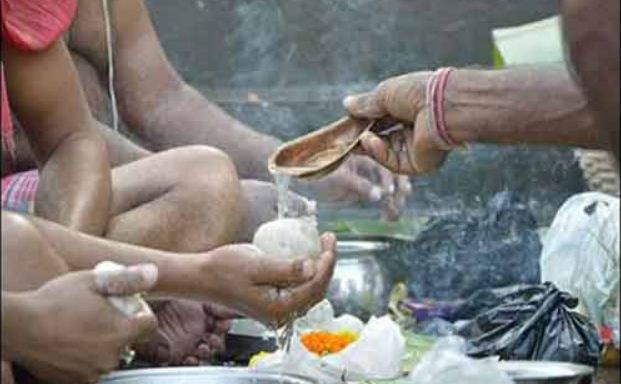The word “Shraadh” originates from the word “Shraddha”, which is a combination of two Sanskrit words “Sat” meaning truth and “Adhar” meaning basis. Succinctly put, it means anything or any act that is performed with all sincerity and faith. It can be explained as, “Shraddhyaa Kriyate Yaa Saa”. Shraadh is a ritual in Hinduism in which one pays homage to their deceased parents and ancestors. Every year, the Shraadh ritual is performed on the death anniversary of a person during the Amavasya called ‘Pitru Paksha’. It is a custom for the Hindu religion, also called Mahalayapitru paksha, which begins at Purnima in the Ashwini month.
Origin
According to Hindu sacred texts, Sage Atri was the eldest of the 10 sons of Lord Brahma. Sage Atri first understood the rituals of Shraadh prepared by Lord Brahma for his sons. Understanding the process of the ritual from Narada Muni, Nimi Rishi started invoking his ancestors through Shraadh.
The heavenly voices from above remarked, “Nimi, your son has already taken place among the Pitru Devas. Since you have done the virtuous act of feeding and worshiping the soul of your departed son. It is the same as you performed Pitru Yagya.”
Since then, Shraadh is considered an important Hindu ritual. Prabhu Shri Ram had performed Shraadh in Aranya for the salvation of his late father Dasharatha’s soul. The Mahabharata and other Puranic books have detailed descriptions of Shraadh as well.
Bhagwan Sri Krishna in the Bhagwat Gita in chapter number 2 verse 20 has remarked: “Naa jayate mriyate va kadacin nayam bhutva bhavita va na bhuyah ajo nityah sasvato ’yam purano na hanyate hanyamane sarire” “The soul is never born nor it dies any time. Soul has not come into being, does not come into being, and will not come into being. Soul is unborn, eternal, ever-existing and primeval. The soul is not slain when the body is slain.”
There are mainly 12 types of Shraadh mentioned in the texts. These are “Nitya, Nimitik, Kamya, Vriddhi, Sapindan, Parvana, Goshta, Shurdhyatha, Karmanga, Devika, Upcharika and Samvatsarika Shraadh”.
In North and East India, the Shraadh is called Pitru Paksha Shraadh, in Tamilnadu, it is called Aadi Amavasai, Karikadaka Vavu Bali in the state of Kerala and Amavasi rituals in other states or regions.
Shraadh Puja — a truly unique ritual
Hinduism is a unique religion, especially when compared to other Abrahamic faiths. It is the only religion where the ancestors are revered to an extent that holy rituals are performed to keep their memory alive. And nearly half a month is dedicated to remembering the departed ones and simultaneously remind ourselves that how far we have come as a society – a proud Sanatani society. In this period of 16 days, Hindus offer a variety of food items and clothes to the poor. It is also believed that feeding dogs, crows, and cows also bring salvation to the ancestors.
Importance
The spiritually potent mantras that are chanted during the ritual of Shraadh have the subtle power of providing momentum to the bodies of deceased ancestors so that they can progress to a higher astral plane of existence after the ritual is performed
This period of 16 days is considered taboo for auspicious work including engagement, marriage,and Griha Pravesh. The ritual can be performed by the eldest son or eldest male of the family. Rituals under Pitru Paksha include performing tarpan and shraadh to pay homage to the dead.
Shraadh or Tarpan is usually performed in the presence of a priest. It is also stated that non-vegetarian food should be avoided during this period.
Shraadh is not performed in non-Hindu households. It is a subtle reminder that our ancestors, despite being hounded and chastened by other religious faiths for conversion, stuck to their beliefs and kept the memory of proud Sanatanis intact.
